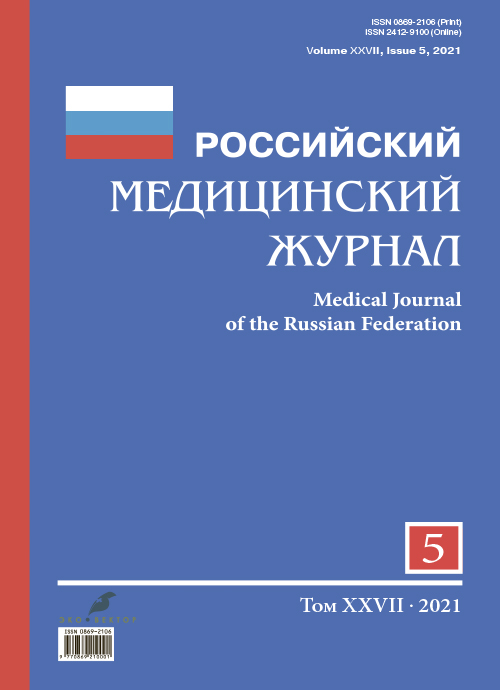Comprehensive rehabilitation for injuries to the medial collateral ligament of the knee in skiers and snowkiters
- 作者: Levkov V.Y.1, Ikonnikova M.S.1, Andronova L.B.1, Remizov A.N.2, Panyukov M.V.1, Butorina A.V.1, Polyaev B.A.1, Lobov A.N.1, Plotnikov V.P.1, Platonova A.V.3
-
隶属关系:
- N.I. Pirogov Russian National Research Medical University
- Dmitry Rogachev National Medical Research Center of Pediatric Hematology, Oncology and Immunology
- Kite School Storm
- 期: 卷 27, 编号 5 (2021)
- 页面: 473-480
- 栏目: Clinical medicine
- ##submission.dateSubmitted##: 21.06.2022
- ##submission.dateAccepted##: 21.06.2022
- ##submission.datePublished##: 15.09.2021
- URL: https://medjrf.com/0869-2106/article/view/108915
- DOI: https://doi.org/10.17816/0869-2106-2021-27-5-473-480
- ID: 108915
如何引用文章
详细
BACKGROUND: The main function of the medial collateral ligament is static stabilization when the tibia is deviated outward. Medial collateral ligament damage may result from the application of a sharp force to the tibia and knee joint in a valgus position, often leading to knee instability, recurrent synovitis and posttraumatic osteoarthritis. This often results in the development of functional disorders that sharply limit the motor abilities of patients, thereby affecting the performance (support ability) of the injured limb.
AIM: The study aimed to conduct a comparative analysis of the efficiency of various current rehabilitation techniques providing a more patient-oriented approach in the conservative treatment of various degrees of medial collateral ligament injuries based on the assessment of the capabilities of magnetic resonance imaging in 38 patients.
MATERIALS AND METHODS: Thirty-eight patients (27 men and 11 women, 71.05% and 28.95%, respectively) with partial medial collateral ligament injuries were followed up. The mean age was 28.5 years (19–38 years). All subjects were involved in skiing and snowkiting in the “alpine skiing” discipline. The diagnosis was made based on clinical examination, patient’s complaints, and magnetic resonance imaging (MRI) of the knee joint. The examination was performed on a Vestra-2 magnetic resonance tomograph with a superconducting magnet and a magnetic field induction of 0.5 Tesla. Optimal for knee joint examination was a quadrature Surf-76 receiving and transmitting coil, which allowed the selection of a small field of view without artifacts or spatial distortion and increased the signal/noise ratio. The knee joints were examined twice: on the day of admission (maximum 1.5 days after injury) and at the end of the week 6 of conservative treatment.
RESULTS: Using the rehabilitation treatment program proposed by the authors in patients with medial collateral ligament injuries, a decrease in the severity of clinical symptoms and an improvement of functional characteristics were observed. Inclusion of the kinesiotaping technique led to a reduction of the treatment recovery period.
CONCLUSIONS: Current noninvasive diagnostic techniques (in particular, MRI) for bone tissues, articular cartilages, and periarticular soft tissues allow to determine the degree of damage to anatomical structures, choose the optimal conservative treatment method , and set the duration and extent of artificial immobilization and the terms of the onset of rehabilitation procedures for patients with partial injuries of the medial collateral ligaments. The results of the proposed rehabilitation treatment program for injuries of the medial knee ligament include a reduction of pain, synovitis and limping, and an improvement of muscle strength and elasticity and knee stability.
全文:
作者简介
Vitaly Levkov
N.I. Pirogov Russian National Research Medical University
编辑信件的主要联系方式.
Email: levkovv@ya.ru
ORCID iD: 0000-0002-4104-2886
MD, Cand. Sci. (Med.), assistant professor
俄罗斯联邦, 1, Ostrovityanova, Moscow, 117997Mariya Ikonnikova
N.I. Pirogov Russian National Research Medical University
Email: Vasya_ikonnikova@mail.ru
俄罗斯联邦, 1, Ostrovityanova, Moscow, 117997
Larisa Andronova
N.I. Pirogov Russian National Research Medical University
Email: larisaandronova@mail.ru
MD, Cand. Sci. (Med.)
俄罗斯联邦, 1, Ostrovityanova, Moscow, 117997Andrey Remizov
Dmitry Rogachev National Medical Research Center of Pediatric Hematology, Oncology and Immunology
Email: andrey.remizov@fccho-moscow.ru
ORCID iD: 0000-0003-1918-0841
俄罗斯联邦, Moscow
Maxim Panyukov
N.I. Pirogov Russian National Research Medical University
Email: maxim287@mail.ru
MD, Cand. Sci. (Med.)
俄罗斯联邦, 1, Ostrovityanova, Moscow, 117997Antonina Butorina
N.I. Pirogov Russian National Research Medical University
Email: avbutorina@gmail.com
MD, Doc. Sci. (Med.), Рrofessor
俄罗斯联邦, 1, Ostrovityanova, Moscow, 117997Boris Polyaev
N.I. Pirogov Russian National Research Medical University
Email: polyaev@sportmed.ru
MD, Dr. Sci. (Med.), Рrofessor
俄罗斯联邦, 1, Ostrovityanova, Moscow, 117997Andrey Lobov
N.I. Pirogov Russian National Research Medical University
Email: a_lobov54@mail.ru
MD, Dr. Sci. (Med.), Professor
俄罗斯联邦, 1, Ostrovityanova, Moscow, 117997Valeriy Plotnikov
N.I. Pirogov Russian National Research Medical University
Email: pronator@mail.ru
MD, Dr. Sci. (Med.), Рrofessor
俄罗斯联邦, 1, Ostrovityanova, Moscow, 117997Aleksandra Platonova
Kite School Storm
Email: school@storm-kite.com
俄罗斯联邦, Moscow
参考
- Bychkov AE. Povrezhdeniya vnutrennei bokovoi svyazki kolennogo sustava. Bulletin of medical internet conferences. 2014;4(5):828. (In Russ).
- Deikalo VP, Boloboshkoch KB. Struktura travm i zabolevanii kolennogo sustava. Novosti khirurgii. 2007;15(1):26–31. (In Russ).
- Girshin SG, Lazishvili GD. Kolennyi sustav (povrezhdeniya i bolevye sindromy). Moscow; 2007. (In Russ).
- Popova SN, editor. Fizicheskaya reabilitatsiya: uchebnik dlya studentov vysshikh uchebnykh zavedenii. Moscow; 2013. (In Russ).
- Tsykunov MB. Rehabilitation programs of the damaged cartilage and capsular-ligamentous structures of the knee. Guidelines. Bulletin of rehabilitation medicine. 2014;(3):110–114. (In Russ).
- Mironov SP, Orletskii AK, Tsykunov MB. Povrezhdeniya svyazok kolennogo sustava. Klinika, diagnostika, lechenie. Moscow; 1999. Mironov SP, Orletskii AK, Tsykunov MB. Povrezhdeniya svyazok kolennogo sustava. Klinika, diagnostika, lechenie. Moscow; 1999. (In Russ).
- Bryukhanov AV, Vasil’ev AY. Magnitno-rezonansnaya tomografiya v osteologii. Moscow, 2006. (In Russ).
- Dzhumabekov SA, Baigaraev EA, Kazakov SK. Surgical treatment of injury of knees collateral ligament. Universum: Meditsina i farmakologiya. 2014;(12):26–31. (In Russ).
- Perova EI. Fizicheskaya reabilitatsiya posle travm kak uslovie povysheniya kachestva zhizni sportsmenov [dissertation]. Moscow; 2007. (In Russ).
- Callaghan JJ. The Adult Knee. Philadelphia: Lippincott Williams & Wilkins; 2003.
- Futryk AB. Diagnostika, lechenie i reabilitatsiya bol’nykh s povrezhdeniyami svyazok kolennogo sustava v ostrom periode travmy [dissertation]. Moscow; 2002. (In Russ).
补充文件












